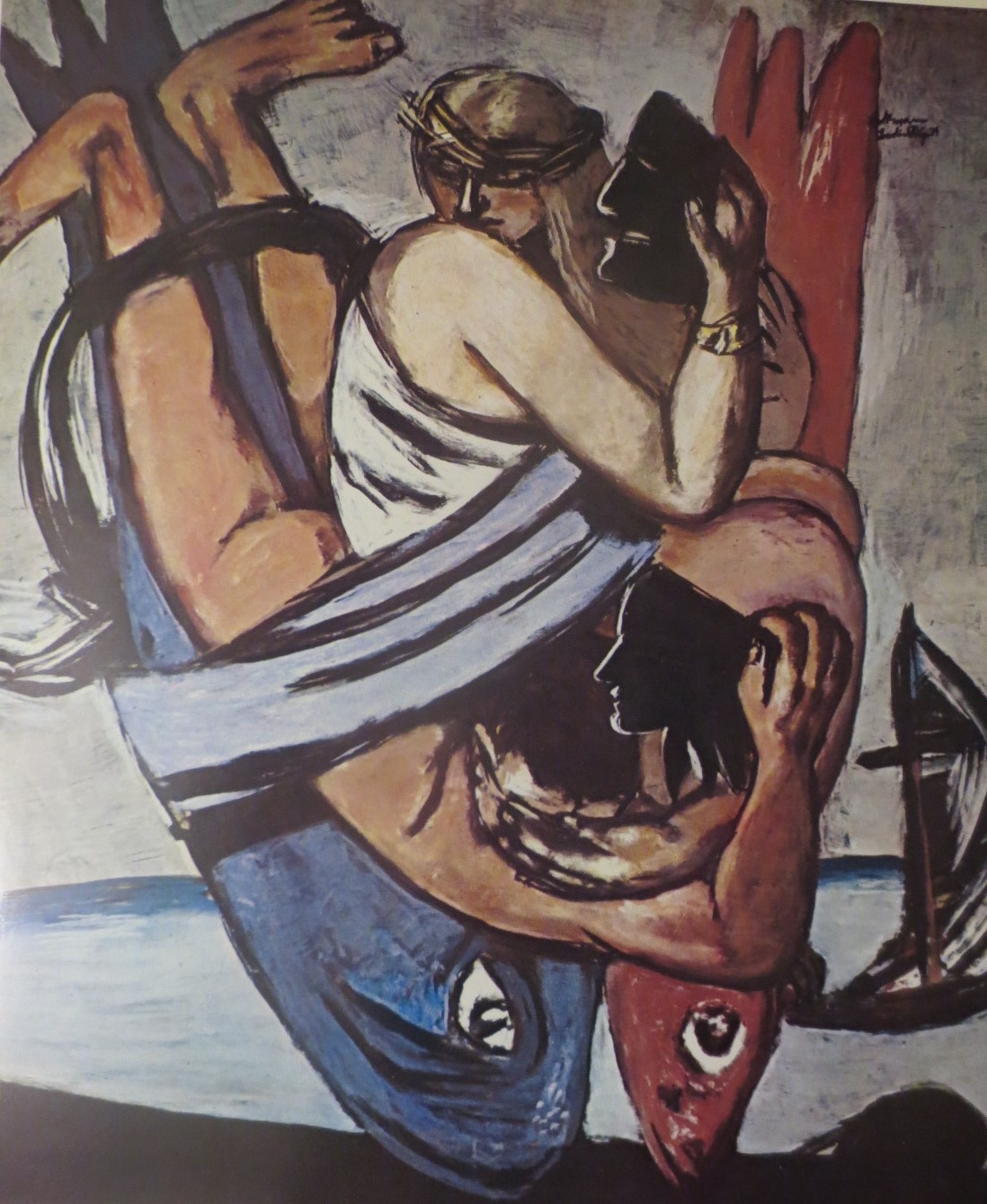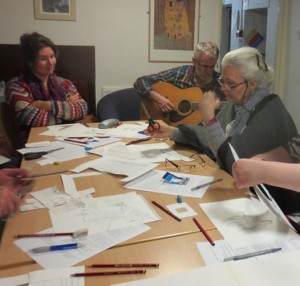
Max Beckman was born in Leipzig, Germany, when he was ten years old his father died and the family moved to Brunswick in Lower Saxony, his parent’s birthplace. Beckman attended the Grandducal Art School in Weimar in 1900, three years later he stayed in Paris and in 1904 he goes to Berlin, then in 1906 he travels to Florence where he spent six months, in 1905 he joins the Die Brucke art group which was formed in Dresden, – there is an earlier blog on this site about that art movement. Beckman’s work is called German Expressionist although his work is figurative, he rejected the description and became a member of a group called New Objectivity along with the painter George Grosz among others, they looked forward with a certain amount of cynicism, having seen the results of war. Beckman was to become even more outraged by the activities of the Nazis after the 1930s Returning to his early years, on the move again he moves to Berlin in 1907, in 1908 he and his wife have a son, Peter. At the outbreak of WW1 in 1914 he enlists in the German army field hospital corps but on health grounds he is discharged a year later. Max Beckman’s work was influenced by the experiences of living through both world wars, his time in the army was very traumatic and left a lasting impression which impacted on his art producing strong, raw images of people in different places with hard faces without laughter, at the circus, on the dance floor or sitting at a table in a restaurant, he also painted several self portraits.
In 1925 he married for the second time and taught art in Frankfurt for eight years, he exhibited work in New York, Hammheim and in Berlin. In 1933 the Nazi regime dismissed him from his post, Max Beckman moves back again to Berlin, his work is taken out of exhibitions by Hitler and along with the work of other painters that Hitler rejects an exhibition is set up called ‘Degenerate Art’ opened for the public to visit and ridicule. In 1937 Beckman and his wife move to Amsterdam where he is very productive, also spending some time in Paris. During a visit to London he gives a lecture called ‘On My Painting’ it was an anti- Nazi discourse. He exhibits work in the ‘Exhibition of 20th century German Art’. During 1938/9 he lives in Paris, he seems to be a constant wanderer, in 1947 the family moved to New York where he spent more settled years although he toured around the USA and taught in Washington until his death in 1950. I think the life that Beckman led and his experiences, especially the year working in an army hospital are reflected in his work, his paintings are not easy viewing.
I have chosen a painting called The Journey of the Two Fishes, oil on canvas completed in 1934. We see a couple who are bound together and strapped to two fishes, a strange craft, Beckman’s mythology was his own but he was interested in Babylonian lore and myth which portrays a god named Dagon, a fertility symbol who has the head of a fish and a similar god called Oannes who brought wisdom to humankind. The fishes are diving to the depths of the ocean, the woman stares into the distance, the man is very afraid knowing that they are ‘heading for perdition’, both have removed their masks, their shallow lives revealed, for Beckman the fishes were a symbol of overpowering sexual desires, he had seen medieval paintings depicting the Last Judgement such as in the fresco at Composanto at Pisa, also Hindu myths. The black colour at the lower edge of the work is ‘ a tragic symbol of hopelessness.’ We can also see a glimmer of hope in the sailing ship on the right hand side, its mast is the shape of a cross, a coincidence or not?
Information from wikipedia, the image is taken from the book Beckman, written by S Luckner.



